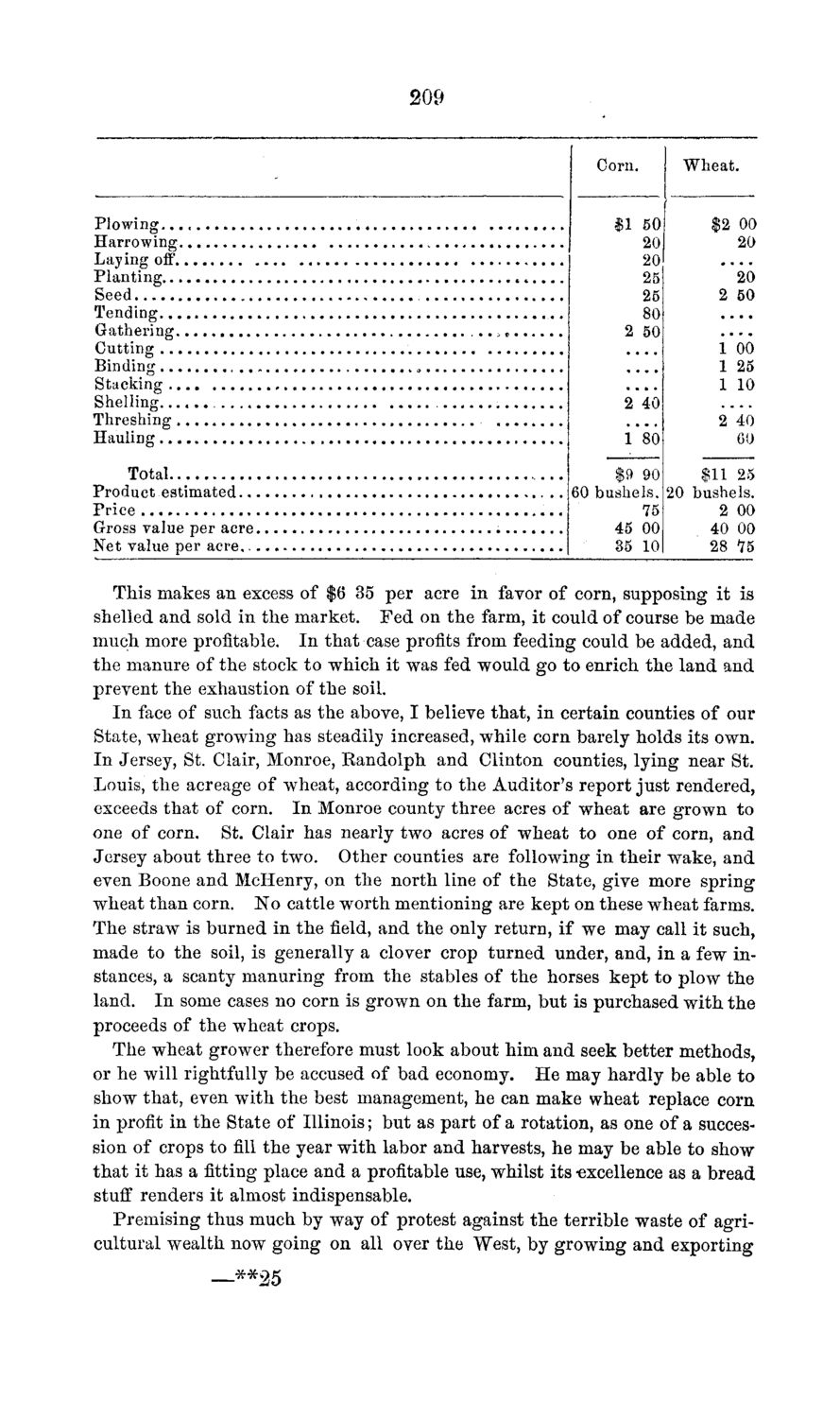| |
| |
Caption: Board of Trustees Minutes - 1869
This is a reduced-resolution page image for fast online browsing.

EXTRACTED TEXT FROM PAGE:
209 Corn. Plowing. Harrowing Laying off Planting Seed Tending Gathering Cutting Binding Stacking Shelling. Threshing Hauling $1 50 20 20 25 25 80 2 50 Wheat. $2 00 20 '*20 2 50 00 25 10 , 2 40 i*80 40 60 Total Product estimated.. Price Gross value per acre Net value per acre,. $9 90 $11 25 60 bushels. 20 bushels. 75 2 00 45 00 40 00 35 10 28 75 This makes an excess of $6 35 per acre in favor of corn, supposing it is shelled and sold in the market. Fed on the farm, it could of course be made much more profitable. In that case profits from feeding could be added, and the manure of the stock to which it was fed would go to enrich the land and prevent the exhaustion of the soil. In face of such facts as the above, I believe that, in certain counties of our State, wheat growing has steadily increased, while corn barely holds its own. In Jersey, St. Clair, Monroe, Kandolph and Clinton counties, lying near St. Louis, the acreage of wheat, according to the Auditor's report just rendered, exceeds that of corn. In Monroe county three acres of wheat are grown to one of corn. St. Clair has nearly two acres of wheat to one of corn, and Jersey about three to two. Other counties are following in their wake, and even Boone and McHenry, on the north line of the State, give more spring wheat than corn. No cattle worth mentioning are kept on these wheat farms. The straw is burned in the field, and the only return, if we may call it such, made to the soil, is generally a clover crop turned under, and, in a few instances, a scanty manuring from the stables of the horses kept to plow the land. In some cases no corn is grown on the farm, but is purchased with the proceeds of the wheat crops. The wheat grower therefore must look about him and seek better methods, or he will rightfully be accused of bad economy. He may hardly be able to show that, even with the best management, he can make wheat replace corn in profit in the State of Illinois; but as part of a rotation, as one of a succession of crops to fill the year with labor and harvests, he may be able to show that it has a fitting place and a profitable use, whilst its excellence as a bread stuff renders it almost indispensable. Premising thus much by way of protest against the terrible waste of agricultural wealth now going on all over the West, by growing and exporting —**25
| |